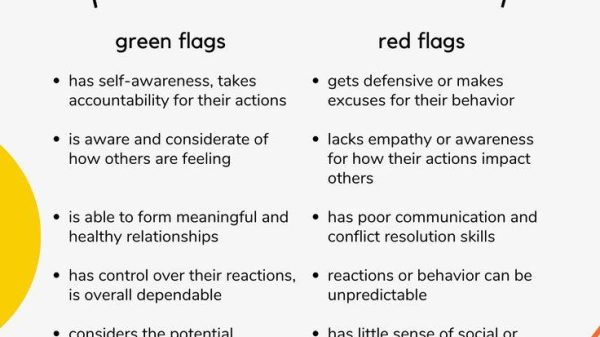In the intricate dance of human relationships, the concept of love languages has waltzed its way into the spotlight, promising a roadmap to deeper emotional connections. Coined by Dr. Gary Chapman in the 1990s, this framework suggests that understanding and speaking your partner’s primary love language—be it words of affirmation, acts of service, receiving gifts, quality time, or physical touch—can unlock the door to a more fulfilling relationship. Yet, as with any popular theory, there emerges a chorus of voices questioning its universal applicability. Are love languages truly the key to emotional intimacy, or have they been elevated to an overrated status in the quest for connection? As we delve into this topic, we aim to unravel the complexities and uncover whether love languages are indeed the linchpin of relational harmony or merely one piece of a much larger puzzle.
Understanding the Origins and Popularity of Love Languages
The concept of love languages, introduced by Dr. Gary Chapman in his 1992 book “The Five Love Languages,” has profoundly influenced how people perceive and communicate affection in relationships. The idea revolves around the notion that individuals express and receive love in distinct ways, categorized into five primary languages: Words of Affirmation, Acts of Service, Receiving Gifts, Quality Time, and Physical Touch. This framework has gained immense popularity, not only for its simplicity but also for its ability to offer a structured approach to understanding emotional needs.
- Words of Affirmation: Verbal expressions of love and appreciation.
- Acts of Service: Actions performed to ease the burden of responsibilities.
- Receiving Gifts: Thoughtful gestures that show you are valued.
- Quality Time: Undivided attention and meaningful interaction.
- Physical Touch: Non-verbal communication through touch.
What sets the love languages apart in the realm of relationship advice is their accessibility and practical application. They offer a vocabulary for discussing emotional needs and can serve as a tool for resolving conflicts and deepening connections. However, the widespread adoption of this model raises questions about its universal applicability and whether it oversimplifies the complex dynamics of human relationships. Despite these debates, the enduring popularity of love languages suggests they resonate deeply with many, providing a framework for nurturing intimacy in an ever-evolving social landscape.

The Science Behind Emotional Connection: Beyond Simple Categories
Understanding emotional connection requires delving into the intricacies of human interaction, far beyond the simplicity of predefined categories. Emotions are complex and multifaceted, woven from a tapestry of experiences, perceptions, and subconscious cues. While the concept of love languages offers a framework for understanding individual preferences in expressing affection, it may not capture the full spectrum of emotional connectivity. The science behind emotional bonds suggests that these connections are often formed through shared experiences, mutual understanding, and empathetic resonance rather than just aligning with specific communicative styles.
Research highlights several key factors that contribute to building a deeper emotional connection:
- Empathy: The ability to genuinely understand and share another person’s feelings.
- Authenticity: Being true to oneself, which fosters trust and intimacy.
- Shared experiences: Engaging in activities together that create meaningful memories.
- Active listening: Fully concentrating, understanding, and responding to a partner’s words and emotions.
These elements emphasize the importance of a more holistic approach to emotional bonding, suggesting that effective connection often transcends the boundaries of conventional categorizations like love languages.

Recognizing Individual Needs: Personalizing Emotional Bonds
In the quest for deeper emotional connections, it becomes crucial to recognize the unique needs of individuals. While the concept of love languages has gained popularity, it’s important to consider that emotional bonding is not a one-size-fits-all approach. Personalizing emotional bonds involves understanding and appreciating the distinct ways people express and receive affection. This means going beyond predefined categories and focusing on the nuanced preferences that each person brings to the relationship.
- Active Listening: Engage in meaningful conversations to uncover what truly resonates with your partner.
- Observational Insights: Pay attention to subtle cues and behaviors that indicate emotional needs.
- Flexible Adaptation: Be willing to adapt your approach as your partner’s preferences evolve over time.
- Emotional Empathy: Strive to understand emotions from your partner’s perspective, fostering a deeper connection.
By embracing a personalized approach, you honor the individuality of your partner, cultivating a bond that is not only genuine but also resilient. This tailored connection transcends traditional love languages, offering a more authentic and fulfilling relationship.

Practical Approaches to Strengthening Relationships Without Labels
In a world where labels can sometimes complicate things, focusing on the core elements of human connection can be incredibly refreshing. One approach is to prioritize active listening. Engaging in conversations where you genuinely listen, without the urge to respond immediately, can create a safe space for both parties. This practice not only enhances mutual understanding but also builds a foundation of trust and empathy.
Another effective method is to embrace the power of small, consistent gestures. These don’t need to be grand or extravagant. Simple actions like remembering a significant date, preparing a meal, or even sending a thoughtful text can speak volumes. Such gestures demonstrate attentiveness and care, fostering an environment where emotional bonds can thrive without the constraints of predefined labels.








